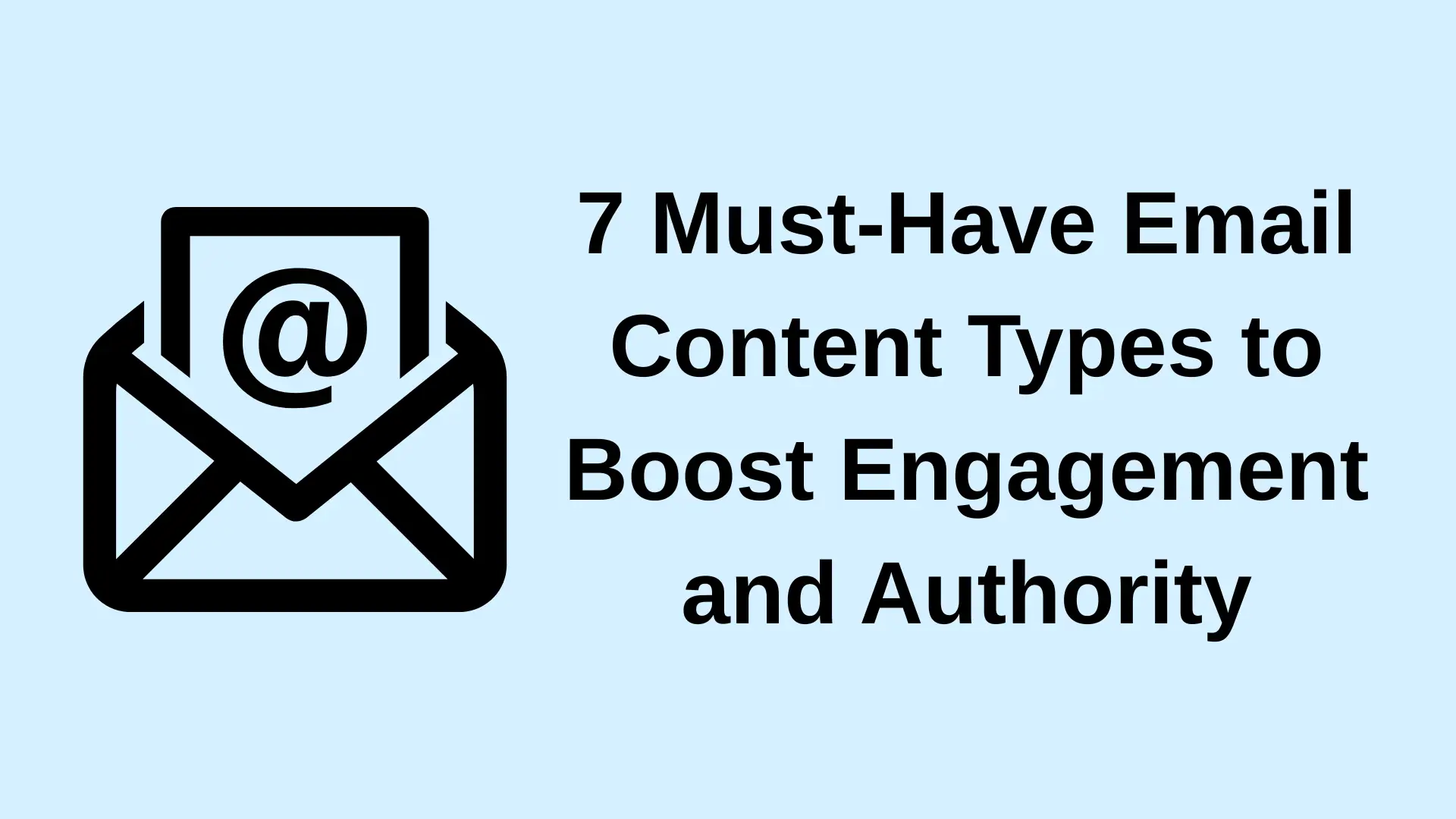
7 Must-Have Email Content Types
Email marketing remains one of the most effective ways to connect with your audience, drive sales, and build lasting relationships. But with inboxes flooded daily, standing out requires strategic content that adds value. In this guide, we’ll explore seven types of email content every brand should leverage—each designed to educate, engage, and convert. Whether you’re nurturing leads or retaining customers, these formats will help you build trust, authority, and loyalty. Let’s dive in!
1. Educational Articles: Establish Your Expertise
Purpose: Educate your audience with actionable insights.
Why It Works: People crave knowledge. By sharing industry trends, how-to guides, or expert tips, you position your brand as a trusted resource.
Benefits:
-
Builds long-term credibility.
-
Encourages subscribers to view your emails as valuable, not just promotional.
Examples: -
A SaaS company sharing a “Beginner’s Guide to SEO.”
-
A fitness brand emailing workout tips or nutrition guides.
Pro Tip: Keep articles concise and link to full blog posts for deeper dives.
2. Customer Stories: Let Your Audience Speak for You
Purpose: Highlight real-life success stories.
Why It Works: Testimonials and case studies humanize your brand. They show prospects what’s possible using your product or service.
Benefits:
-
Builds trust through social proof.
-
Makes your offerings relatable.
Examples: -
A case study showing how Client X increased revenue by 50% using your software.
-
A video testimonial from a satisfied customer.
Pro Tip: Use specific metrics (e.g., “Saved 10 hours/week”) to add authenticity.
3. Surveys and Polls: Listen to Your Audience
Purpose: Gather feedback to refine your strategy.
Why It Works: People appreciate brands that value their opinions. Surveys also provide data to improve your offerings.
Benefits:
-
Boosts engagement by making subscribers feel heard.
-
Uncovers pain points or preferences.
Examples: -
A post-purchase survey asking, “How can we improve?”
-
A poll letting subscribers vote on your next product feature.
Pro Tip: Offer a small incentive (e.g., a discount) for completing surveys.
4. Product Updates: Keep Customers in the Loop
Purpose: Announce new features or improvements.
Why It Works: Regular updates keep your audience informed and excited about what’s next.
Benefits:
-
Drives repeat purchases.
-
Reduces customer churn by showcasing innovation.
Examples: -
“Introducing Dark Mode: Here’s What’s New!”
-
A limited-time offer tied to a product launch.
Pro Tip: Use visuals like GIFs or screenshots to demonstrate updates.
5. Interactive Content: Make Emails Fun and Memorable
Purpose: Engage subscribers with hands-on experiences.
Why It Works: Interactive elements break the monotony of text-heavy emails.
Benefits:
-
Increases click-through rates.
-
Creates a memorable brand experience.
Examples: -
A quiz like “Which Marketing Strategy Suits Your Business?”
-
An interactive infographic showing industry statistics.
Pro Tip: Ensure compatibility with mobile devices, where most emails are opened.
6. Personalized Recommendations: Tailor the Experience
Purpose: Deliver content based on user behavior.
Why It Works: Personalization boosts relevance, making subscribers feel understood.
Benefits:
-
Increases conversion rates.
-
Strengthens customer loyalty.
Examples: -
“Based on your recent purchase, you might love these products!”
-
A curated list of blog posts matching a subscriber’s interests.
Pro Tip: Use segmentation tools to automate personalized emails.
7. Promotional Offers: Incentivize Action
Purpose: Drive sales with exclusive deals.
Why It Works: Everyone loves a good discount or limited-time offer.
Benefits:
-
Creates urgency.
-
Rewards loyal customers.
Examples: -
“Flash Sale: 30% Off All Plans This Week!”
-
Early access to sales for VIP subscribers.
Pro Tip: Avoid overloading inboxes with promotions—balance them with educational content.
Conclusion
Crafting effective email content isn’t about sending more emails—it’s about sending the right emails. By mixing educational articles, customer stories, surveys, product updates, interactive content, personalized recommendations, and strategic promotions, you’ll keep your audience engaged and eager to open every message. Remember, the goal is to build relationships, not just contacts. Start experimenting with these seven types, track what resonates, and refine your approach.
Ready to level up your email game? Bookmark this guide and follow Maruf for more actionable tips!
